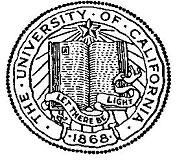
|
IN MEMORIAM
IN MEMORIAM
Loring Chapman
Professor Emeritus, Psychiatry and Human Physiology
Davis
1929—2001
Born on October 4, 1929, Loring Chapman was educated at the University of Nevada and the University of Chicago, there completing a Ph.D. in psychology at the age of 26. He went on to do post-doctoral training in pharmacology at Cornell, where he also served as an assistant professor until coming to the University of California Los Angeles in 1961 as an associate professor in residence. After serving at NIH as a branch chief, from 1966 to 1967, he declined an offer to set up a Behavioral Biology group at NIH, and came to the new medical school at the University of California, Davis in 1967, to an opportunity to reenter active research in psychobiology.
At Davis, Dr. Chapman was a core founder of the Department of Behavioral Biology and served as its chair from 1970 to 1971 and from 1976 to 1979. This department was one of the first of its kind. To it, Dr. Chapman brought his training in psychology with a subspecialty in neuropsychology and psychophysiology. He inaugurated the first long term study of the effects of continuing administration of marijuana to primates, studying the established changes in their baseline behavior and reproductive function. Dr. Chapman received numerous prizes and honors, and was invited for several visiting professorships as a result of this active research, using the primate model, on the effects of tetrahydrocannabinol on social behavior. He received a NASA grant in 1973 to carry out study of brain biorhythms in monkeys, specifically, biorhythmic studies of EEG, evoked response and arousal states. In related work, with clinical application, he demonstrated abnormality in the neurophysiological systems responsible for the maintenance of normal biorhythms of brain sleep-arousal states in patients with Trisomy 21. Dr. Chapman also participated in a large program grant on mental retardation, funded by the NIH Health and Human Development branch. This work joined pediatric, neurology and behavioral capability in a comprehensive study of intensive perinatal care and subsequent outcomes. This involved collaboration with a multidisciplinary group at UCLA on comprehensive detailed examination of deep-brain stimulation, analysis of electrophysiological effects of psychoactive pharmaceutical agents, and EEG correlations of defined behavior states.
Thus, Dr. Chapman was an early pioneer of applied behavioral neuroscience. Through his ideas and his capacity to integrate the knowledge of his time from several fields, he creatively anticipated work in current studies of neuropharmacology, and developmental neurobiology. However, despite the recruitment of good scholars, the Department of Behavioral Biology did not succeed in attracting sufficient grant funding and was dissolved. Nonetheless, faculty who worked with him during those years describe him as a man of vision, and a wonderful chairman, who was very supportive and encouraging to those working under him.
Dr. Chapman joined the faculty of the Department of Psychiatry in 1979 and served there until, in 1990, illness made it impossible to continue work. He established a pain clinic in the outpatient department, to apply his range of expertise to clinical treatment and study of pain and of biological mediators. Dr. Chapman’s extensive knowledge in several fields led to joint appointments in the departments of Human Physiology, from October 1, 1979 to September 2, 1982, and Neurology. One chair commented that his “great range of viable working relationships” with members of other departments of the medical school was a factor that allowed strengthening relationships between these departments.
In his work with colleagues, he participated “quietly, consistently and presumably effectively, as evidenced by the cooperation he enlisted.” As a colleague he was eager to cooperate, helpful, and easy about sharing his knowledge and experience with younger faculty. His strong point with clinicians was noted to lie in his great skill in speculative areas, his thorough knowledge of his subject areas, and his ability to plan imaginative research programs.
Dr. Chapman’s 114 publications included 14 chapters in 3 volumes that he edited on pain, somatoform disorders, and the neurobiological aspects of cognition. These books, Pain and Suffering, The Eye, and Head and Brain, and particularly, those chapters that he authored, were described as “scholarly, thoughtful and critical.”
Dr. Chapman taught extensively. He taught undergraduates, both core courses and clinical clerkships for medical students and supervised many graduate students. Although he had brilliant promise, he was quiet and retiring, and he found it challenging to lecture to large groups. His teaching was most effective in small groups and in the context of active research. His graduate students spoke warmly of his flexibility, sensitivity, close contact, and broad knowledge. In small groups, they described him as “always helpful and adept at answering questions,” and as “admirably clear and succinct.” In particular, his presentation of current research was stimulating and critical, meeting the needs and demands of more advanced students.
Sadly, Dr. Chapman was preceded in death by his daughter, Pandora, a ski champion, who died in an avalanche. His friends remember him as a man who, despite personal sadness, was musical, was able to be playful, and was a welcoming host to members of his scientific group.
Penelope Knapp
Richard Maddock
Marlene Mirassou